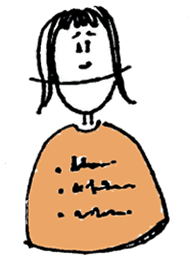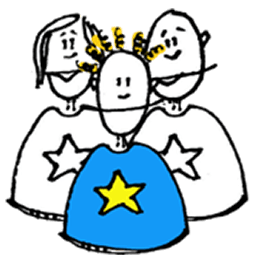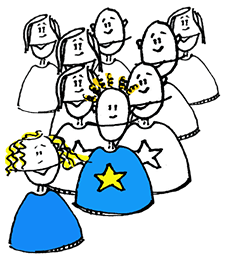Powering a portal takes more than technology. Discussions about platforms, design, and features may appear to be the priority, but the portal team is also key to the success of your portal.
Without the right people to chart a course and drive outcomes, a website or intranet will not be successful
Early on, consider the size of the team, roles, and resources that can be put towards a portal. Good design decisions are built on understandings of the people you have available, how their roles may shift, and the new roles that need to be created. A clear division of work between team members ensures every portal meets the day-to-day needs of users as well as evolves over time.
Two key streams of work need to be in place for website or intranet teams:
- day-to-day management (triaging feature requests, trouble shooting issues, and generating new content)
- vision and evolution (strategic and thoughtful evolution of a portal based on the organizational goals, and portal vision).
The following are the roles and teams that need to be a part of every intranet or website. People can hold multiple roles, but the point is that each of these accountability areas should reside with someone.
The people and roles

Portal owner
Owns the success and vision of the portal
- Maintains and helps develop the vision, including the design principles and outcomes
- An advocate for the team within the rest of the organization
- Holds and helps manage the budget for the portal

Portal manager
Connects between day-to-day decisions and the portal’s vision and strategy
- Accountable for turning the portal roadmap into a reality
- Overall owner of the portal, accountable for day-to-day management
- Owns and maintain the information architecture
- Oversees the release management process to manage feature requests and match requirements to delivery capacity
- Create and support a community of portal champions

Content manager
Maintains an editorial calendar and considers the voice, tone, and personality of content
- Plans when content will be created, refreshed, and retired
- Works with content contributors to provide support and direction
- Oversees the content review cycle and may approve content before it is published
- There may be content managers for different areas of a portal, if so these managers need to meet regularly to stay aligned
- Part of the content steering committee

Content contributor
Writes content and actively looks for areas to improve the information within the portal
- Produces content
- Works with content manager to refine and create content that maps to the goals of the portal and end-users

Support contact
On speed-dial because they always fix the problem
- Troubleshoots issues and provides supports to users
- Provides information to the portal manager on potential improvements based on help requests and feedback

Portal champions
The backbone of a solution, especially when it comes to employee portals and encouraging adoption
- Portal super-users, change agents, and advocates
- Provides guidance to end-users around how and why the organization is using the portal
- Part of the portal manager champion community
Portal committees and teams
While the roles on a website or intranet team are important, there should also be a few groups of people to guide the solution and make sure everything stays focused on organizational goals.
Here are a few key committees and teams that we’ve seen organizations have success with as a website or intranet goes from vision, to build, to launch.

Portal steering committee
A mix of organizational stakeholders, each one invested in the success of the solution
- Provides guidance to the portal manager around the ongoing evolution of the portal
- Prioritization and scoping for releases
- Owns the vision, mission, goals, and objectives of the portal
- Evolves the portal roadmap
- Meets monthly

Content steering committee
Oversees the content team
- Establish and own content priorities and initiatives
- Owns the development and maintenance of the content calendar
- Contributes to decision-making related to information architecture changes
- Meets weekly

Technical release team
Implement and manage the technical side of releases
- Responsible for implementing new functionality base on the roadmap
- Will grow and shrink based on the release schedule and features within each release
- May include a portal manager, business analysts, designers, developers, quality assurance, and project managers

Portal champion community
Crucial to a successful rollout and ongoing user adoption efforts
- Community of portal champions working to build portal knowledge and experience within the organization and leverage the portal technology effectively
- Meets monthly to share successes, opportunities as well as prepare for any coming changes
Bringing it all together
The makeup of a team within an organization will vary based on the size of the organization, the organizational structure, the people, and the goals of the website or intranet. Moving away from a list of roles and responsibilities to focus more on the people involved, who they are, what are their skillsets and what new roles need to be created is foundational.
Powering your portal with these people early in a re-design project enables better decision-making based on the team's individual skills, passions, and capacity to support the features and functionality being developed.



.jpeg?bc=white&la=en&mw=416&modified=20251202191043&hash=E64AA9DFFAE8D1AC27890831F714D5B0FA2FEBB2)

